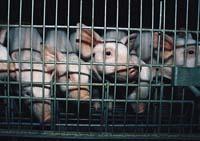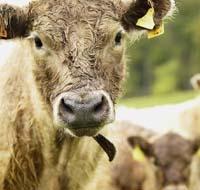Ecological livestock according to the environment
2006/02/01 Galarraga Aiestaran, Ana - Elhuyar Zientzia Iturria: Elhuyar aldizkaria
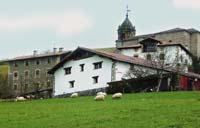
Organic farming is a productive model aligned with the environment. This model adapts to the local environment, so it does not have the same characteristics in one place or another. But it is always based on the relationship and interaction of cattle with the soil.
Animals take food from the soil, while fertilizing and enriching the soil by excrement. The goal is to ensure soil fertility and preserve biodiversity.
Farmers observe not only the land but also water. One of the problems of intensive livestock farming is wastewater treatment. In the Basque Country, due to the type of soil and the abundance of rain, it is easy for deyections to contaminate groundwater. To avoid this, the amount of specimens that can occupy an area is well defined in organic farming.
The maximum number of cattle per hectare is two or a dozen sheep. This aims to ensure that animals have enough food and do not pollute the water. In addition to animal waste, chemical fertilizers also contaminate water, but in organic farming chemical fertilizers cannot be used.
Animal welfare, essential
Another fundamental aspect of organic farming is animal welfare. This means that the animal must meet physiological needs. On the one hand, each animal must have enough space, otherwise stress is generated. On the other hand, it is important to respect the nature of each species and enable their natural behavior. That is, if the animal is solitary, it has to be able to walk alone and that of living in group if it is gregarious.
In addition, the animal must be fed by physiological needs; if it is a fodder animal, it must eat fodder and if it is granívoro, the grain. And of course, you don't have to eat meat if you don't have to eat butcher. In another case, the food should not have leftovers of chemicals and, if possible, the farmer should produce on his land, thus closing the cycle. If you have to buy food or grain, it should be from organic farming.
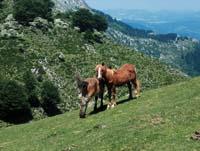
Health as a key
Since the goal is to obtain products without residues of chemicals, animals in organic livestock do not receive hormones, growth and appetite stimulants, or medicines. Vaccines can only be given in case of pest risk and so has been ordered by the government.
If the animals get sick, pharmacies are replaced by other therapies: homeopathy, aromatherapy and phytotherapy. Sara Lorda is responsible for the livestock production of the Organic Farming Association of Gipuzkoa Biolur, homeopathic veterinarian. According to him, animals raised in this model rarely get sick because they have all the conditions for good health. However, in case of illness and risk to the life of the animal, pharmacological treatment can be performed twice a year.
Otherwise, homeopathy and natural therapies give good results. For example, the animal itself uses phytotherapy spontaneously. By instinct he takes a plant that benefits him and is cured without veterinary intervention.
On the other hand, in organic farming native breeds grow, adapted to the area and with less health problems than others. In addition, livestock farmers try to respect the physiology of the animal; for example, calves and lambs are allowed to drink breast milk until they leave the breast, no synchronization of jealousy is allowed by unnatural methods, nor the transfer or genetic transformation of embryos.
The biggest veterinary problem is parasites, especially in sheep and goats. Parasites that affect the liver are typical, such as the hepatic fascist, and goats are greatly affected by a nematode, the stronero.
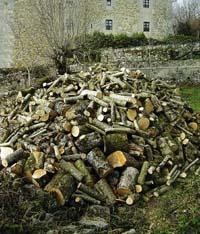
Sara Lorda indicates that to avoid parasites it is advisable to rotate the sections to cut the cycle of the parasite. In addition, it is preferable that animals do not graze early in the morning, since it is then when parasitic surfaces come out. As the sun gains strength, the parasites bury and then it is more difficult to infect the animal. But since animals remain outside as long as possible, it is not easy not to eat in the morning.
Marketing difficulties
With all these measures, the products obtained in organic livestock are of the highest quality. Farmers who choose this production model are satisfied with the results and satisfied with the good growth of livestock. But not everything is so good. This is because they have big problems in marketing their products.
It's hard to reach consumers, and even harder to compete with the label and make it clear to people what's the difference between them. In addition, it does not seem good that the production of label receives so many public subsidies and so few, considering that it produces high quality products.
Therefore, people engaged in organic farming demand greater institutional support both for marketing and for the separation and dissemination of products and, above all, for research. In fact, they consider it important to conduct research to improve and demonstrate that they have special characteristics.
